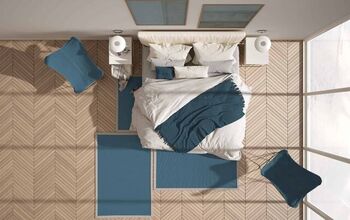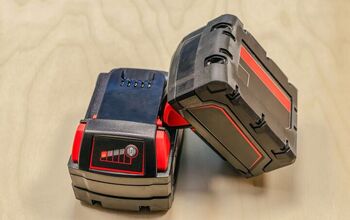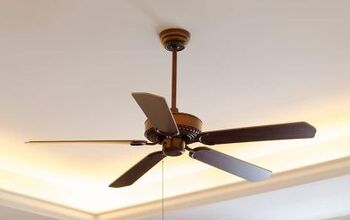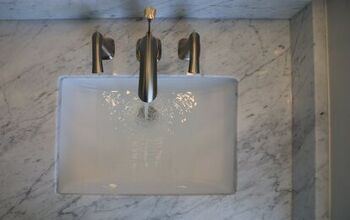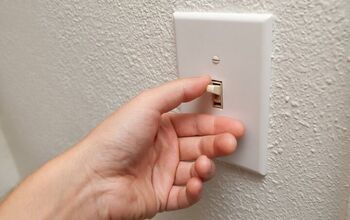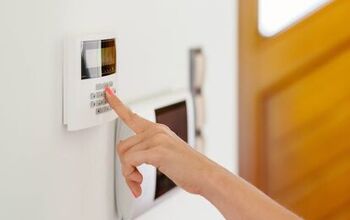Where To Put A Bug Zapper

Countless homeowners use bug zappers to get some peace of mind and enjoy spending time in their yards. They are quite effective, but only if you take great care of them and put them in the right place. You’re not alone if you’ve ever struggled with where to put a bug zapper.
Bug zappers are most effective in dark spots near standing water and plants that attract flying insects. Don’t put your bug zapper near light sources, or else the bugs may not fly into the zapper. Clean your bug zapper weekly and keep it elevated at least 5 to 7 feet above the ground.
Otherwise, you won’t catch as many flying insects, and you’ll render the bug zapper useless. You can even put your bug zapper indoors if you have a bug problem in your house. Follow along as we explore where to put a bug zapper and highlight several maintenance tips.
Where Should You Put A Bug Zapper?
1. Dark Location
It’s no secret that many of the most annoying bugs are drawn to light. Bug zappers emit light that can attract such bugs, and that’s part of why they’re so effective. However, you must keep that in mind when finding a location for your bug zapper, or it may backfire.
For example, you may not kill many bugs with your zapper if you place it near other light sources. The bugs may fly toward the other light sources instead and not even consider the bug zapper. You can avoid this problem if you put your bug zapper in a dark location far from other light sources.
That way, your bug zapper won’t have to compete with other light sources. The darker the location, the more easily you can reduce the pesky insect population in your yard.
2. Close To A Water Source
Water sources attract bugs, not only because of hydration, but because they often breed in standing water. You can reduce the bug population in your yard if you grade the landscape to reduce standing water. Otherwise, you can set your bug zapper up in a spot near standing water, as many insects will fly in the area.
Granted, you shouldn’t put a bug zapper directly above or right beside standing water. That can create an electrocution risk if the bug zapper falls into the water. However, you should find an elevated spot to hang your bug zapper close enough to a water source that you’ll kill a lot of flying insects.
3. At Least Five Feet Off The Ground
You cannot expect your bug zapper to kill many bugs if you set it on the ground. Not only can you inadvertently damage the bug zapper, but most flying insects won’t even see it. Flying insects typically stay at least 5 feet above the ground outdoors.
Ideally, you should hang or set your bug zapper up 5 to 7 feet above the ground. That way, you can kill as many mosquitoes, flies, and gnats as possible to produce noticeable results. Hang the bug zapper from a pole if possible or set it up on a ledge.
Keep in mind that you must avoid hanging the bug zapper near any entry doors leading into your home. Never put bug zappers near entry doors, or the light may draw them into your house. Otherwise, the bug zapper will backfire and make your bug problem worse.
4. Choose A High-Traffic Area
Have you noticed more bugs in specific parts of your yard? If so, that’s where you should focus on setting up a bug zapper to maximize the benefits. This is much easier to figure out if you consider what attracts flying insects in the first place.
Do you have fruit-bearing bushes and trees in your yard? If so, you likely see gnats, fruit flies, and mosquitoes near them, especially if you don’t pick up fallen fruit. The area near the plants is likely a high-traffic bug route, and putting a zapper near it can kill many bugs.
Overgrown areas with tall grass and lots of yard debris can also attract bugs. It may take some time, but you can easily learn a lot about your yard and the bugs within it if you pay attention. Don’t feel bad if you must experiment and move the bug zapper a few times before finding the perfect location.
How Many Bug Zappers Do I Need?
How many bug zappers you need varies based on the size of your yard and how bad your bug problem is. For example, many manufacturers advertise that their bug zappers cover ½-acre to 1 ½ acres of land. In that case, most people only need to place one bug zapper in their yard.
Otherwise, placing 2 bug zappers in a small area won’t make much of a difference. You’ll likely kill the same number of bugs as you would with a single zapper, but instead, it would be split between 2 zappers. That said, you can benefit from 2 zappers if you have 2 acres of developed land with several structures you use, like sheds and gazebos.
Can You Put A Bug Zapper In The House?
You can put a bug zapper in the house, and it’s quite effective in many situations. However, you must look for bug zappers that have a protective shielding. Otherwise, your pets may stick their paws in the zapper and get hurt, which is the worst-case scenario.
You must also put the zappers out of reach from your children, as this can lead to injuries. Regularly clean the bug zapper to remove dead insects. Otherwise, you may create a sanitary problem in your home, and the zapper will become less effective.
How Often Should You Clean A Bug Zapper?
You should clean a bug zapper at least once per week. This can help reduce messes and make your bug zapper work much more effectively. Some people must clean their bug zappers more often than others, especially if they live near many bugs.
At first, it’s worth checking your bug zapper every few days to get an idea of how quickly it fills up. You will likely find many bug carcasses in your bug zapper. Bug zappers electrocute bugs, but they don’t remove the carcasses.
You must unplug your bug zapper, open it, and brush the dead bugs out of the zapper. It is kind of gross, so you may want to wear gloves if you have a weak stomach. Repeat this process weekly or as needed to keep your bug zapper clean.
Do Bug Zappers Kill Pollinators?
Unfortunately, bug zappers can kill pollinators, and that’s why some people prefer not to use them. You may find dead bees and even butterflies in your outdoor bug zapper. You must weigh the pros and cons of using a bug zapper to determine if it’s worth it.
Sure, you can kill flies, gnats, mosquitoes, and other pests that drive you crazy in your yard. However, the risk that you may kill beneficial pollinators is a tough pill to swallow. That’s especially true if you grow plants that attract pollinators, as the bug zapper may negate the effects.
Bug zappers especially attract moths due to the light they emit at nighttime. Wasps and bumblebees may also fly into the bug zapper, although many people don’t mind wasps dying. It’s up to you to decide if killing pollinators is worth the benefit of killing mosquitoes.
Summing It Up
Put your bug zapper in a dark part of your yard near standing water or other bug attractors, like fruit-bearing plants. Ideally, your bug zapper should stand at least 5 feet above the ground to kill as many bugs as possible. Clean your bug zapper weekly and keep it away from other light sources to maximize its potential.
Related Guides:

Nick Durante is a professional writer with a primary focus on home improvement. When he is not writing about home improvement or taking on projects around the house, he likes to read and create art. He is always looking towards the newest trends in home improvement.
More by Nick Durante











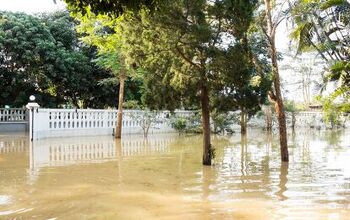
![10 Best Electric Lawn Mowers - [2022 Reviews & Top Rated Models]](https://cdn-fastly.upgradedhome.com/media/2023/07/31/9070486/10-best-electric-lawn-mowers-2022-reviews-top-rated-models.jpg?size=350x220)




